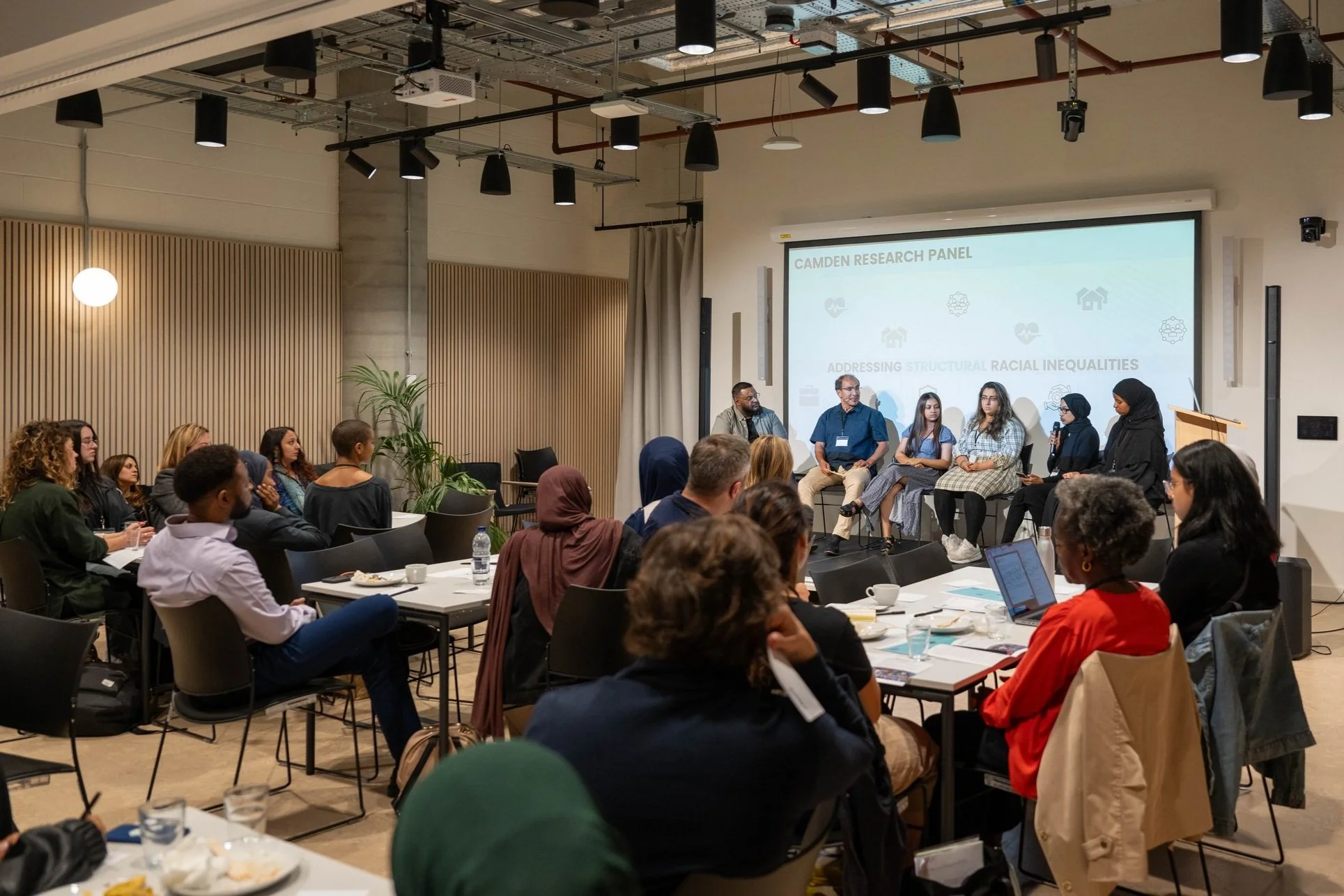So, What Happens After the Research is Done?
Through our citizen-led racism research project, 19 community researchers shone a light on deep-rooted issues in the borough and defined practical recommendations for creating lasting change. With the research phase now complete and a successful citizen assembly held in September 2024, we stand at a critical moment where knowledge must translate into action. I've come to realise that real change takes time, commitment, and a collective effort.
The Research Journey
Our 18-month community research project was truly citizen-led from start to finish. Citizen researchers from Kilburn and Somers Town shaped every aspect of the work - they determined the scope, designed the approach, conducted interviews, and led walking ethnographies to document how structural racism manifests within their neighbourhoods.
Camden Giving's role was to hold space for crucial reflections and conversations, creating an environment where researchers could share experiences, process difficult emotions, and collectively craft their recommendations. The researchers also held community conversations to validate their findings with wider groups of residents in Camden, including grassroots community organisations.
The community researchers presented their research and recommendations for change at a Citizen Assembly we hosted in September 2024, which was well attended by institutions and organisations in the borough. The recommendations range from implementing community-focused policing initiatives to establishing citizen housing boards with real power. This work not only diagnoses the problems but also lays the foundation for meaningful systemic change.
Camden Community Researchers presenting their findings at our Structural Racism Citizen Assembly in September 2024.
Turning Knowledge Into Action
At the assembly last year, we saw real buzz and momentum, but we’ve also seen that transitioning from research to implementation is not without its challenges. One of the biggest has been sustaining engagement with the community researchers. These dedicated individuals gave their time, energy, and emotional labour to examine some of the most painful realities in Camden. After investing so much, it’s understandable that staying involved long-term can be difficult, especially when the slow pace of systemic change feels disheartening given the urgency of the solutions they’ve laid out.
A more practical challenge we’re facing is the funding gap for this next phase of this work. Whilst we secured support for the research phases, we are yet to secure funding for the critical implementation phase, where recommendations are actually put into practice.
Despite the challenges, we're beginning to see promising developments:
Zappi has partnered with Haverstock School to provide apprenticeship opportunities to T-level students, creating pathways to employment for local young people.
We've organised two community safety workshops in collaboration with Camden Police, one focused on Kilburn and one on Somers Town. These sessions were a first step in bringing together communities and Senior Camden Policing to collaborate on strategies to create safer, more connected communities.
The Path Forward
To ensure that this work continues with strong community leadership and institutional accountability, we're planning to implement a dual governance structure:
Camden Anti-Racist Steering Group: This group will oversee the implementation of recommendations from the community-led research, with representation from Camden Council, Camden Police, Camden businesses, and Camden schools.
Citizen-Led Anti-Racist Subgroup: Working in tandem with the steering group, this community-based team will include anti-racist leads for each key area: Safety, Business and Employment, Health, Schools, and Housing. Each lead will be compensated for their time and will deliver community projects aligned with the research recommendations. A subgroup chair will join the steering group meetings as a resident representative, ensuring community voices remain central to all decision-making.
This structure will allow us to revisit the research and communities in Kilburn and Somers Town over time to measure changes and improvements. Most importantly, it ensures that the work remains truly citizen-led.
This research has potential to transform Camden, but like I said earlier, real change takes time, commitment, and collective effort. The issues highlighted by our community researchers were created over generations and are upheld by systemic structures. They can’t be solved by individuals or quick fixes. But with sustained effort and true partnership, we can create a Camden where racial justice is not just an aspiration but a lived reality.
If you'd like to learn more about how you can support this work, please get in touch with Yasmin: Yasmin@camdengiving.org.uk.

